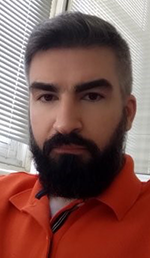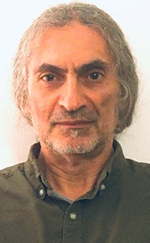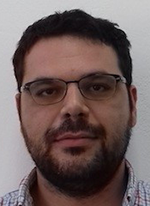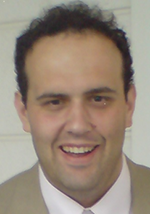Title
ALPHASAT site diversity experiments in Greece and the UK at Ka band: Comparison of 2–years' results
Abstract
Satellite communications have already started to employ mmWave bands such as the Ka-band (20/30GHz) for broadcasting and broadband services; Ka-band is used either for backhauling (feeder links) or direct-to-user services. To enhance the propagation modeling and assist in the development of advanced satellite radio systems, two site diversity experiments are simultaneously conducted in Greece and in the UK using the satellite beacon transmitted by ALPHASAT. In this paper, the two years of collected experimental data are presented and evaluated in terms of first-order statistics. Considering the different climate of the two experiment locations, one in the Southern Mediterranean Sea (Greece) and one in the Northern Atlantic Sea (UK), a comparison between the two respective Ka-band long-term radio diversity channels is also performed. Several conclusions for the diversity system design are drawn that can be particularly significant towards the application of a smart gateway diversity concept in feeder links.
Keywords
ALPHASAT, exceedance probability, excess attenuation, joint statistics, Ka Band, satellite comunications, site diversity
Authors
 Apostolos Z. Papafragkakis
Apostolos Z. Papafragkakis
National Technical University of Athens, Athens, Greece
Apostolos Z. Papafragkakis was born in Heraklion, Greece in 1989. He received the Diploma degree in Electrical and Computer Engineering from the National Technical University of Athens (NTUA), Greece in 2014; he is currently working towards his Ph.D. degree at NTUA. He is a member of the Radio and Satellite Communications Group and has expertise in the design and implementation of Software Defined Radio (SDR) transceivers for communication and propagation studies; he actively participates in the ESA funded research project ASALASCA, where he has undertaken the role of designing and deploying SDR beacon receivers targeting the ALPHASAT satellite in order to conduct propagation measurements at Ka- and Q-band. He has co-authored many international peer-reviewed conferences, journals and book chapters. He is a member of the Technical Chamber of Greece.
 Spiros Ventouras
Spiros Ventouras
STFC Rutherford Appleton Laboratory, RAL SPACE, Harwell, UK
Spiros Ventouras has over 30 years experience in the fields of microwave & millimetre wave propagation and applied mathematics. Following academic study at National Technical University of Athens (Diploma degree in electrical and computer engineering -1985 and Dr. Eng. Degree -1990) and Reading University, UK (MSc in Applied Statistics -2004) he has been with the RAL Space at STFC Rutherford Appleton Laboratory since 1994. At RAL, he has played a leading role in many propagation related contract studies (as a scientist and/or project manager) for the European Union, the Radiocommunications Agency, OfCom and the European Space Agency (ESA). Currently he is leading the ASLASCA consortium of ALPHASAT experiment in Europe (ESA project). He has more than 40 scientific publications and a number of contributions to ITU-R Study Group 3.
 Charilaos I. Kourogiorgas
Charilaos I. Kourogiorgas
National Technical University of Athens, Athens, Greece
Charilaos I. Kourogiorgas was born in Athens, Greece, on July 6, 1985. He received the Diploma Engineering and the Ph.D. degrees in electrical and computer engineering from the National Technical University of Athens (NTUA), Athens, Greece, in 2009 and May 2015, respectively. From October 2009 to June 2011, he was with the Department of Electromagnetism and Radar at Office National d’Études et Recherches Aérospatiales (ONERA), Toulouse, France. From January to October 2016, he served at the Cyber Security unit of the Hellenic Army IT Support Center, Athens, Greece. From April 2017 until March 2019, he was with RAL Space as a Marie Sklodowska-Curie Fellow, working on the application of Artificial Intelligence for physical layer techniques and resource allocation. He has authored/coauthored more than 100 papers in international refereed journals and conferences. His research interests include channel modeling for satellite and terrestrial communication systems, the evaluation of system’s performance and the application of Artificial Intelligence methods for satellite communication systems. Dr. Kourogiorgas is a Marie Sklodowska Curie Fellow, member of Technical Chamber of Greece. He was the recipient of the Chorafas Scholarship for his Ph.D. studies and the URSI Young Scientist Award for 2014.
 Athanasios D. Panagopoulos
Athanasios D. Panagopoulos
National Technical University of Athens, Athens, Greece
Athanasios D. Panagopoulos (S’98, M’02, SM ’09): was born in Athens, Greece on January 26, 1975. He received the Diploma Degree in Electrical and Computer Engineering (summa cum laude) and the Dr. Engineering Degree from National Technical University of Athens (NTUA) in July 1997 and in April 2002. From January 2005 to May 2008, he was head of the Satellite Division of Hellenic Authority for the Information and Communication Security and Privacy. He is currently Associate Professor (since May 2017) in NTUA. He has published more than 170 papers in International Journals and IEEE Transactions and more than 210 papers in conference proceedings. He has also published more than 35 Book Chapters in International Books. He is the recipient of URSI General Assembly Young Scientist Award in 2002 and 2005. He is co-recipient of the Best Paper Awards in IEEE RAWCON 2006 and IEEE ISWCS 2015. His research interests include radio communication systems design, wireless and satellite communications networks and the propagation effects on multiple access systems and on communication protocols. He has participated to ITU-R and to ETSI Study Groups, and he is member of Technical Chamber of Greece and Senior Member of IEEE. He is Chairman of the IEEE Greek Communication Chapter. He has led as Principal Investigator many R&D programs funded by EU and European Space Agency. Finally, he has served on the Editorial boards in Elsevier Physical Communication, in IEEE Transactions on Antennas and Propagation and in IEEE Communication Letters.